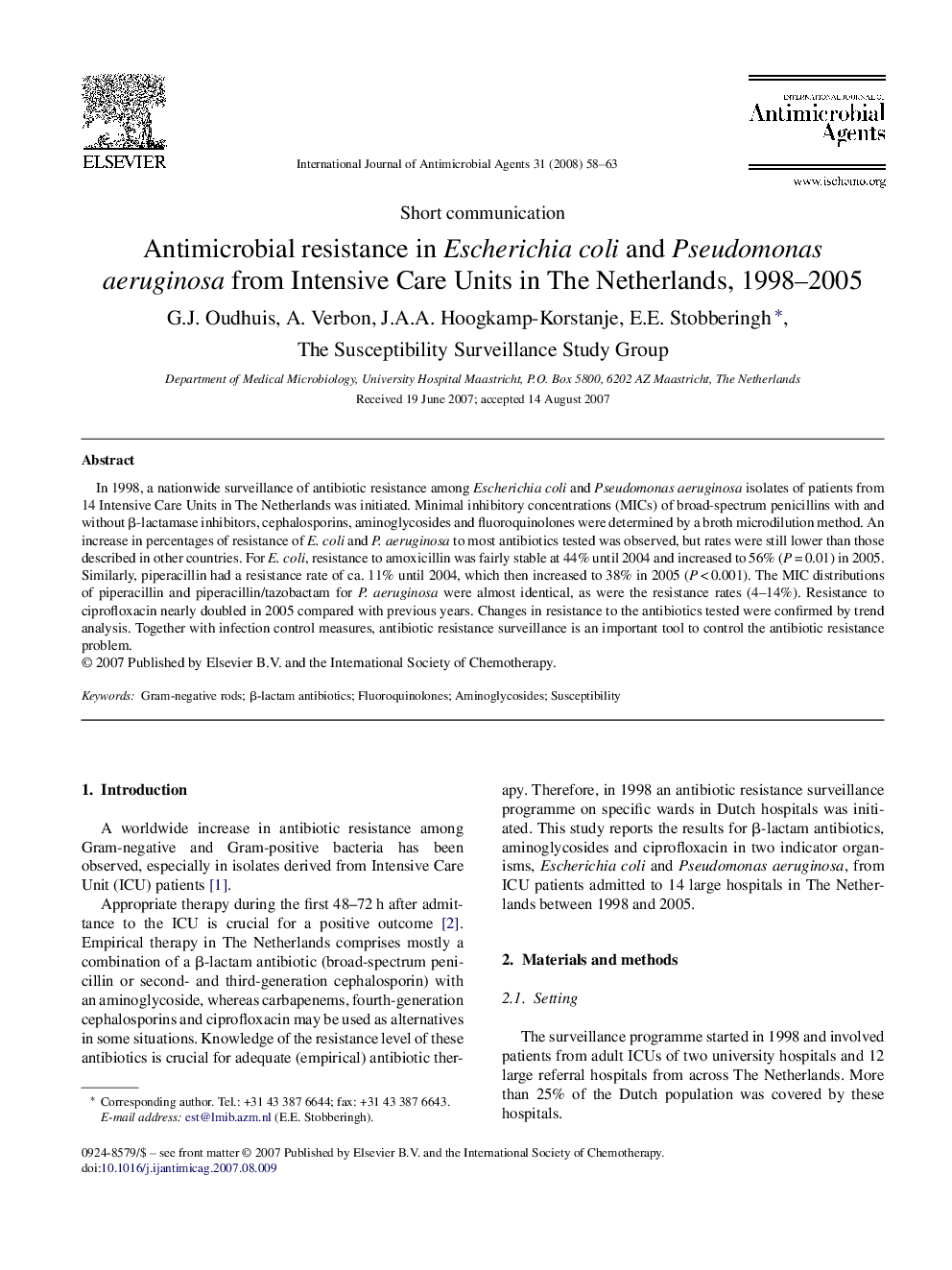| Article ID | Journal | Published Year | Pages | File Type |
|---|---|---|---|---|
| 3360623 | International Journal of Antimicrobial Agents | 2008 | 6 Pages |
Abstract
In 1998, a nationwide surveillance of antibiotic resistance among Escherichia coli and Pseudomonas aeruginosa isolates of patients from 14 Intensive Care Units in The Netherlands was initiated. Minimal inhibitory concentrations (MICs) of broad-spectrum penicillins with and without β-lactamase inhibitors, cephalosporins, aminoglycosides and fluoroquinolones were determined by a broth microdilution method. An increase in percentages of resistance of E. coli and P. aeruginosa to most antibiotics tested was observed, but rates were still lower than those described in other countries. For E. coli, resistance to amoxicillin was fairly stable at 44% until 2004 and increased to 56% (P = 0.01) in 2005. Similarly, piperacillin had a resistance rate of ca. 11% until 2004, which then increased to 38% in 2005 (P < 0.001). The MIC distributions of piperacillin and piperacillin/tazobactam for P. aeruginosa were almost identical, as were the resistance rates (4-14%). Resistance to ciprofloxacin nearly doubled in 2005 compared with previous years. Changes in resistance to the antibiotics tested were confirmed by trend analysis. Together with infection control measures, antibiotic resistance surveillance is an important tool to control the antibiotic resistance problem.
Related Topics
Life Sciences
Immunology and Microbiology
Applied Microbiology and Biotechnology
Authors
G.J. Oudhuis, A. Verbon, J.A.A. Hoogkamp-Korstanje, E.E. Stobberingh, The Susceptibility Surveillance Study Group The Susceptibility Surveillance Study Group,
